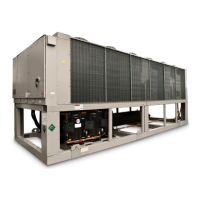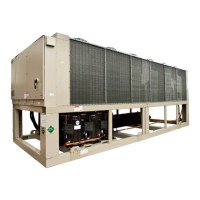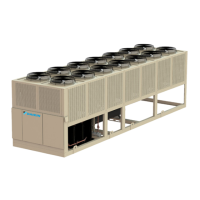Why is the discharge pressure high on my Daikin AGZ 160D?
- FFrancis WheelerAug 21, 2025
High discharge pressure in your Daikin Chiller can stem from several issues. Noncondensables might be present in the system, requiring extraction using approved procedures. The system could be overcharged with refrigerant, necessitating removal of the excess and a check of liquid subcooling. Ensure the optional discharge shutoff valve is fully open. Verify that the FanTrol wiring is correct and that the fan is running by checking its electrical circuit and motor. A dirty condenser coil can also cause this issue, so clean it thoroughly. Finally, correct any air recirculation problems.




